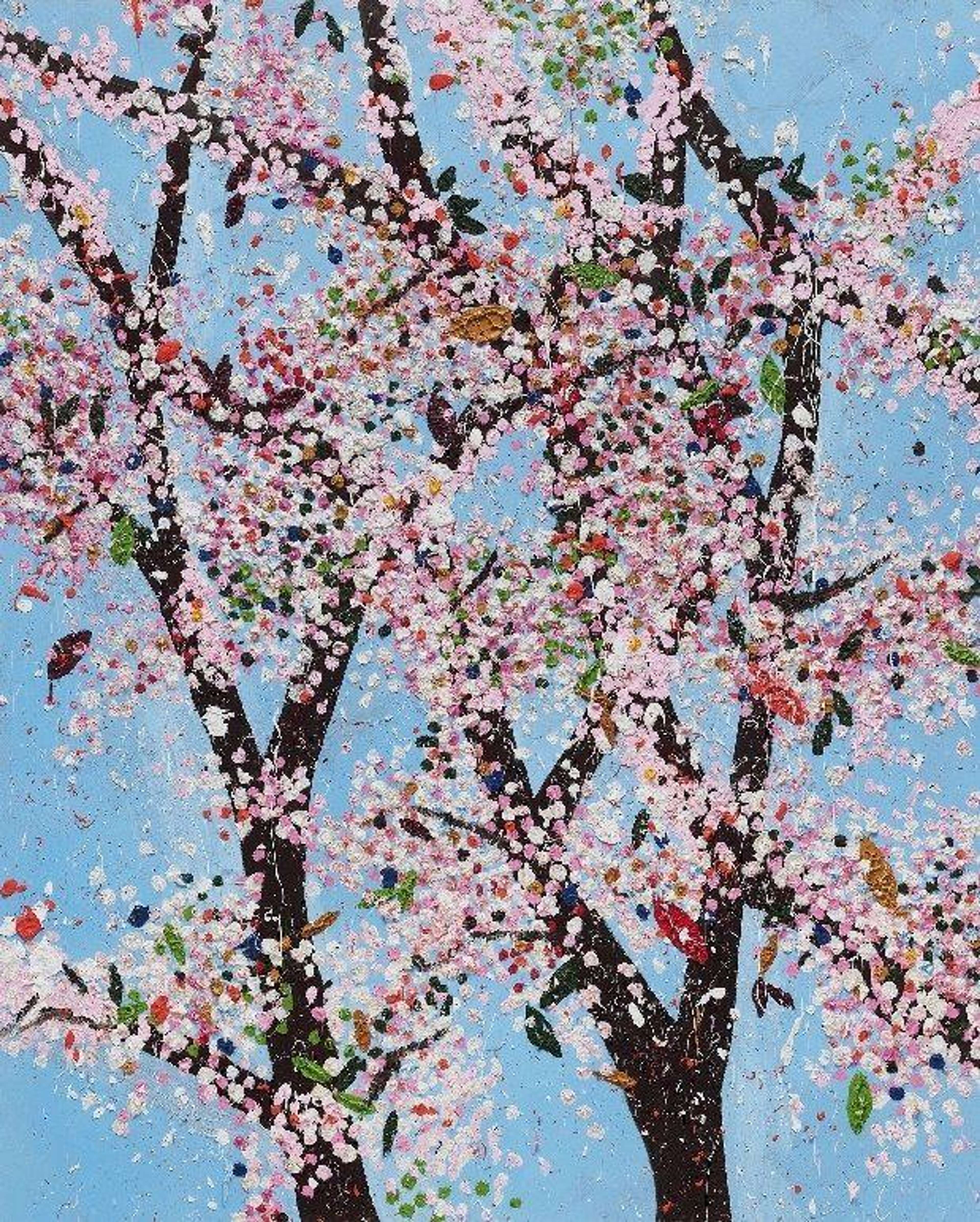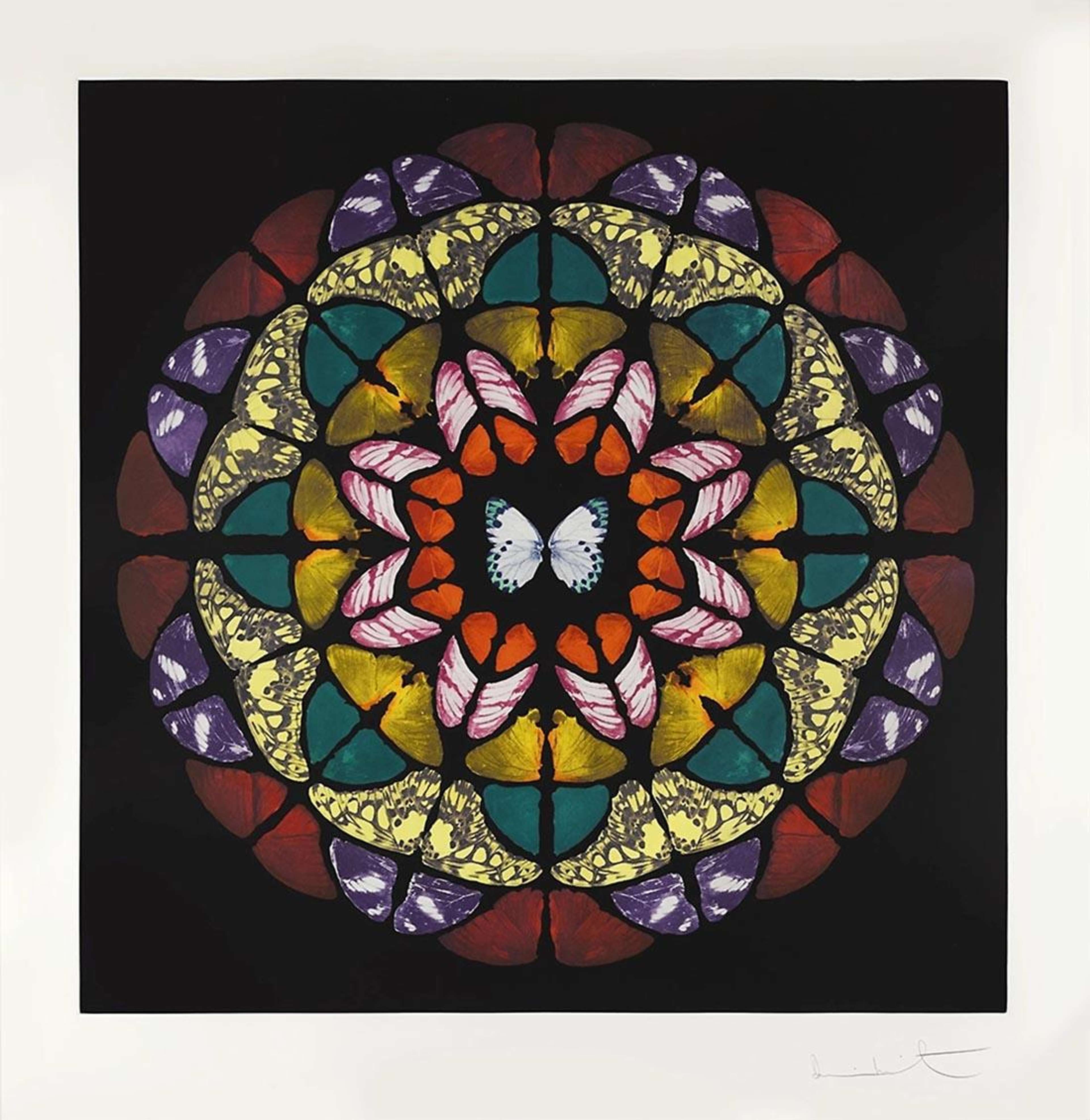Damien Hirst: Where The Land Meets The Sea

 Image © HENI / Damien Hirst At Work On Where The Land Meets The Sea
Image © HENI / Damien Hirst At Work On Where The Land Meets The Sea
Damien Hirst
677 works
Throughout his career, Damien Hirst has had a long history of collaborating with auction houses. Famously, his 2008 show Beautiful Inside My Head Forever bypassed the traditional gallery system entirely when the artist chose to present new artworks directly at auction. His most recent collaboration, Where The Land Meets The Sea, is a new show set to open at Phillips London on July 20th.
The show features previously undisplayed works from Hirst’s three new painting series: Coast Paintings, Sea Paintings and Seascapes, all of which were directly inspired by the artist’s connection to the sea. The artist also sought inspiration from Abstract Expressionism, namely Robert Motherwell’s Beside the Sea paintings series from the 1960s.
 Image © Sotheby’s / The Golden Calf © Damien Hirst 2008
Image © Sotheby’s / The Golden Calf © Damien Hirst 2008The Precedent for the Phillips Collaboration: Beautiful Inside My Head Forever and Beyond
This is far from Hirst’s first foray into auction house collaborations. His 2008 show at Sotheby’s, Beautiful Inside My Head Forever was a groundbreaking moment in the contemporary art world. The exhibition, comprising 223 pieces of previously unseen work, was notable for two main reasons: the manner in which it was sold and the vast sums of money it generated. For the first time, a major contemporary artist decided to bypass the traditional gallery route and sell a significant body of work directly at auction. By selling directly at auction through Sotheby's, Hirst was effectively cutting out the middleman.
The auction took place on the 15th and 16th of September, 2008, and included a range of works that reflected many of Hirst's past themes. The works ranged from medicine cabinets to butterfly paintings, and of course included his signature formaldehyde sculptures – the most famous of which, The Golden Calf sold for over £10 million. In total, the sale raised £111 million, breaking the record for a one-artist auction. It was seen by many as the peak of the contemporary art market bubble, coming just as the global financial crisis was beginning. Despite many critics accusing Hirst of being more concerned with money than art, the artist defended the sale as a democratising move that made his work available to a wider audience.
The success of the Beautiful Inside My Head Forever auction marked a pivotal moment in Hirst's career, cementing his status as one of the most commercially successful artists of our time.
Coast Paintings, Sea Paintings and Seascapes: Hirst’s New Series
Where The Land Meets The Sea displays three distinct new painting series by Hirst. Each variously inspired by one aspect of the artist’s experiences of the beach, particularly during the British winter, the paintings also sought inspiration from previous artists in art history. In particular, Robert Motherwell’s Beside The Sea paintings have served as an inspiration. Created in the mid to late 1960s, this series is defined by its vivid, energetic and gestural use of white and blue paint, directly inspired by the ocean around Motherwell’s house in Provincetown, Massachusetts. The paintings are characterised by thick swaths of paint applied with a palette knife, creating a raw sense of the churning, energetic movement of the sea, while the broad, sweeping gestures lend a monumental feel to the paintings.
Hirst’s interpretations of the ocean are similar in their ability to capture in abstract form the essence of the ocean with its power, vitality and ever-changing nature.
 Image © Phillips / Studio View Of The Coast Paintings 2019
Image © Phillips / Studio View Of The Coast Paintings 2019Coast Paintings
Individually named after a British coastal location, these works were first created in 2019. Each of 168 paintings began as grey canvases on the floor of Hirst’s studio as he created his iconic Cherry Blossoms paintings, capturing the paint splatter as it fell. Although they began as a byproduct, Hirst soon saw their potential and worked on the Coast Paintings, shaping them to encapsulate the vibrancy, thrill and transformation experienced by a seaside during winter. In direct contrast to Cherry Blossoms, in this series large swathes of canvas remain untouched by the splatter.
Each of the canvases comes with a corresponding postcard attached, and are in varying sizes from a substantial 144 x 108 inches to 12 x 12 inches. They also vary in composition and colour palette, although each ultimately aims to encapsulate the sensation of seeing scattered light in the British seas during the winter season.
 Image © Phillips / Whitecap © Damien Hirst 2022
Image © Phillips / Whitecap © Damien Hirst 2022Sea Paintings
Captured in photorealistic detail, these grayscale paintings show the sheer power of the ocean in coastal storms around the world. Composed of 64 works created in 2022, this series marks the latest iteration in Hirst’s 25-year long practice of producing paintings after photographs, his so-called Fact Paintings.
These seemingly random, energetic impressions of storms are captured in a single click and then painstakingly worked into paintings over several months. The process is transformative, changing them from fleeting moments into perpetual renditions and embodying a dichotomy between the accidental and deliberate.
 Image © Phillips / Cyclone © Damien Hirst 2021
Image © Phillips / Cyclone © Damien Hirst 2021Seascapes
Lastly, the Hirst’s Seascapes are a blend of both of the aforementioned series, mixing photorealistic depictions of storms with paint splatters. The densely splattered paints evolve atop the base compositions, mimicking the water sprays bursting from the waves and evoking a sense of those captured moments. By incorporating a tangible layer of paint to the inherently dynamic images, Hirst intensifies the depiction of nature's power in the compositions, drawing the viewer one step nearer to the actual experience.
 Image © Gagosian / Paintings from Damien Hirst’s Seascapes series in the studio 2021.
Image © Gagosian / Paintings from Damien Hirst’s Seascapes series in the studio 2021.Where The Land Meets The Sea: On Show
The show, seen for the first time, is set to open at the Phillips London galleries on July 20th and remain until August 18th, 2023. Visitors to 30 Berkeley Square will surely be in for an immersive experience, thanks to Hirst’s ever-evolving approach to painting and capacity for reinvention.






